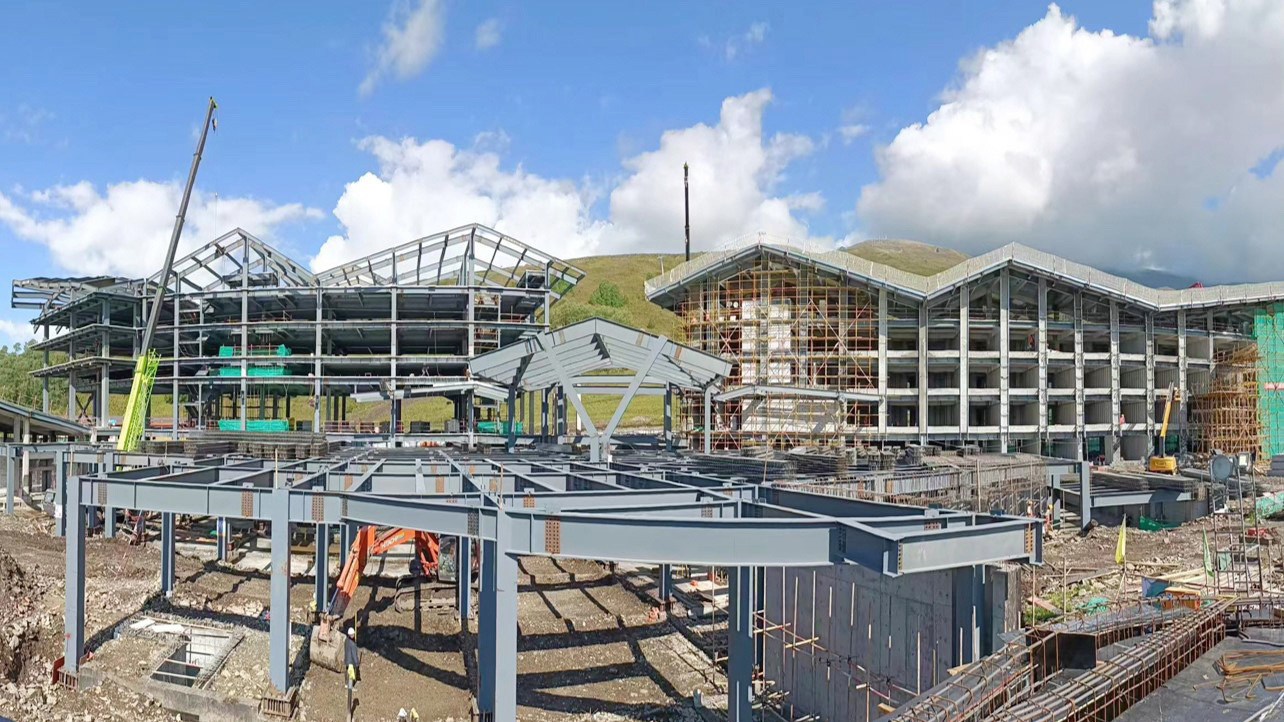Why Light Steel Framing is a Game-Changer for Residential Construction
Jun 04,2025

Why Light Steel Framing is a Game-Changer for Residential Construction
Introduction to Light Steel Framing in Residential Construction
Light steel framing (LSF) is swiftly transforming the landscape of residential construction. Characterized by its lightweight yet robust nature, it offers builders and homeowners an innovative solution to traditional construction methods. With the increasing demand for sustainable building practices and energy-efficient designs, LSF stands out as a preferred choice. In this article, we delve into the various facets of light steel framing, exploring its advantages, applications, and implications for the future of home construction.
The Evolution of Construction Materials
Before delving into the specifics of light steel framing, it’s essential to understand the evolution of construction materials. Traditionally, wood has been the go-to material for residential buildings. However, as environmental concerns and technological advancements have emerged, alternatives like steel have gained traction.
The Shift from Wood to Steel
Wood, while versatile and readily available, comes with its own set of challenges, including susceptibility to pests, rot, and fire. Steel, in contrast, provides a solution that mitigates these issues. As residential building needs evolve, light steel framing emerges as not only a viable alternative but also a superior option for modern construction.
Understanding Light Steel Framing
Light steel framing utilizes thin sheets of steel that are lightweight and easy to manipulate. Unlike traditional steel, which is often bulky and heavy, light steel framing is designed to support residential structures while minimizing weight.
Components of Light Steel Framing
Key components of light steel framing include:
- **Steel Studs**: Vertical components that provide structural support.
- **Steel Tracks**: Horizontal components that outline the framework and support the studs.
- **Bracing**: Diagonal members that add stability and resist lateral forces.
- **Headers and Sills**: Reinforced sections used above doors and windows to distribute loads effectively.
Specifications and Standards
Light steel framing adheres to strict building codes and standards. This ensures that structures are safe, durable, and efficient. Understanding these specifications is crucial for builders and architects to effectively utilize this modern construction method.
Benefits of Light Steel Framing
The advantages of light steel framing are numerous, making it a game-changer in the residential construction industry.
1. Durability and Longevity
Steel is inherently resistant to many of the challenges that affect traditional building materials. It does not warp, twist, or shrink, ensuring that structures maintain their integrity over time. Additionally, light steel framing is immune to termites and other pests, making it a long-lasting solution.
2. Design Flexibility
The lightweight nature of steel allows for greater design flexibility. Architects can create open spaces without the need for excessive structural support. This flexibility enables innovative designs that align with the modern homeowner's aesthetic preferences.
3. Sustainability and Energy Efficiency
Light steel framing is a sustainable choice for construction. Steel is 100% recyclable, and using steel reduces the waste often associated with traditional building materials. Furthermore, the energy efficiency of steel structures can lead to lower utility costs for homeowners.
4. Speed of Construction
The prefabrication of light steel components streamlines the construction process. Builders can easily assemble the frames on-site, significantly reducing construction time. This efficiency can translate to cost savings and quicker project completion.
5. Fire Resistance
Steel is non-combustible, providing a significant advantage in fire safety. Light steel framing can enhance the safety of residential structures by reducing the risk of fire-related damage, offering peace of mind to homeowners and builders alike.
Applications of Light Steel Framing in Residential Construction
Light steel framing is versatile and can be applied in various residential construction projects.
1. Single-Family Homes
For single-family homes, light steel framing allows for innovative designs while ensuring structural integrity. The lightweight nature of steel enables builders to construct homes that are both spacious and aesthetically pleasing.
2. Multi-Family Dwellings
In multi-family units, light steel framing provides the necessary support to accommodate multiple living spaces. Its speed of construction is particularly beneficial in urban settings where time and space are limited.
3. Modular and Prefabricated Homes
The rise of modular and prefabricated homes has seen a significant integration of light steel framing. These homes often require rapid construction while maintaining quality and durability, making light steel an ideal choice.
Challenges and Considerations
While light steel framing offers numerous benefits, it is essential to consider some challenges associated with its use.
1. Initial Cost
The upfront cost of light steel framing can be higher than traditional materials. However, this investment often pays off in the long run through reduced maintenance and energy costs.
2. Thermal Conductivity
Steel has high thermal conductivity, which can lead to energy loss if not properly insulated. Builders must ensure that adequate insulation is applied to maintain energy efficiency.
3. Sound Transmission
Steel structures may transmit sound differently than wood, which can be a consideration in multi-family units. Proper insulation and design techniques can mitigate sound transmission issues.
Future Trends in Light Steel Framing
As the construction industry continues to evolve, light steel framing is poised to play a significant role in shaping the future of residential construction.
1. Technological Advancements
Innovations in steel production and construction technology will enhance the capabilities of light steel framing. Advanced design software and fabrication techniques will further streamline the construction process.
2. Increased Adoption of Sustainable Practices
With a growing emphasis on sustainability, light steel framing aligns with eco-friendly building practices. The shift towards greener construction materials will likely elevate the role of LSF in residential projects.
3. Integration with Smart Home Technologies
As smart home technologies become more prevalent, integrating these systems with steel-framed structures will offer unique opportunities for modern home design. This integration will enhance functionality and appeal to tech-savvy homeowners.
FAQs about Light Steel Framing
1. What is light steel framing?
Light steel framing is a construction method that uses thin sheets of steel to create a durable and lightweight structure for residential buildings.
2. How does light steel framing compare to traditional wood framing?
Light steel framing is generally more durable, resistant to pests, and offers greater design flexibility than traditional wood framing. It is also fire-resistant and often more sustainable.
3. Is light steel framing cost-effective?
While the initial cost may be higher than wood, the long-term savings from reduced maintenance and energy efficiency often make light steel framing a cost-effective choice.
4. Can light steel framing support multi-story buildings?
Yes, light steel framing is suitable for multi-story residential buildings due to its strength and flexibility, allowing for innovative design and construction.
5. What are the insulation requirements for light steel framing?
Proper insulation is crucial for energy efficiency in light steel structures, as steel has high thermal conductivity. Builders should select suitable insulation materials to mitigate energy loss.
Conclusion
Light steel framing is undoubtedly a game-changer in residential construction, offering numerous benefits that align with modern building practices. Its durability, design flexibility, and sustainability make it a preferred choice for builders and homeowners alike. As the industry continues to evolve, embracing light steel framing will pave the way for innovative, efficient, and resilient homes. The future of residential construction is bright, and light steel framing is leading the charge.
PREVIOUS:
Contact Us
E-mail :
183597530@qq.com
WhatsApp:
+86-13810577811
Address:
No. 4 Fengzhi Road, Binhe New District, Baotou Rare Earth High tech Zone, Inner Mongolia Autonomous Region









